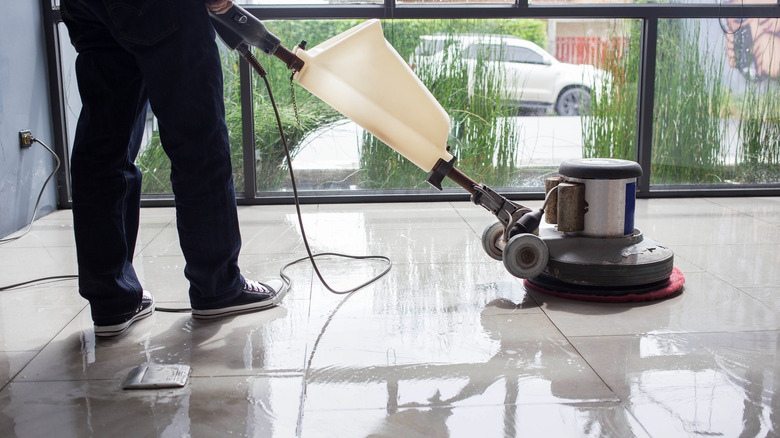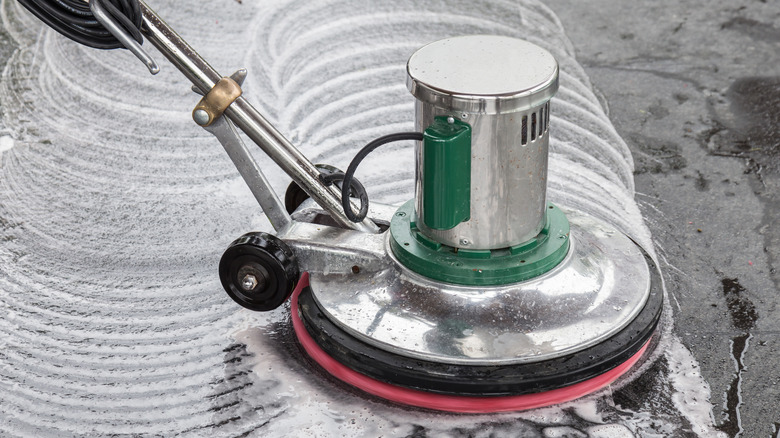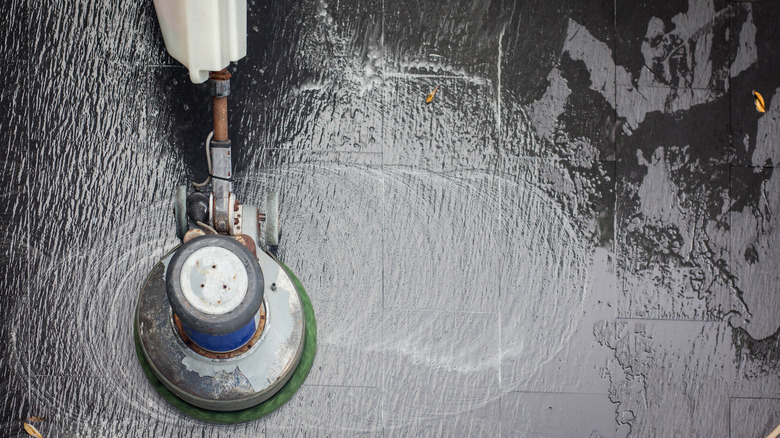Buffing Vs Burnishing: Which Makes Sense For Your Floors?
So, your floors aren't looking as sprightly as they used to. They've been through a lot — daily traffic, occasional spills, and just the general wear and tear of life. Now, you're at a crossroads, trying to figure out whether to buff or burnish them back to life. As you face this choice, it's important to understand what each process entails and how it aligns with your floor's needs. Buffing and burnishing machines are both designed to polish hard floors and effectively remove residue. However, buffing machines, also sometimes called swing machines, use a calm, systematic approach to floor care. They normally operate at speeds between 150 and 330 RPM and work gently over the floor. On the flip side, burnishing machines operate at a much higher speed, usually between 1,000 and 3,000 RPM. They're designed for efficiency and speed, making quick work of the task at hand.
In short, the primary distinction between the two lies in their speed. Burnishing polishes floors much quicker as it operates at higher speeds and with greater power, which creates more friction on hard surfaces. This results in a glossy, wet-looking finish, giving your floors a spectacular shine. In contrast, buffers keep your floors clean but typically produce a subtler surface gloss. Your decision should be based on your floor's material, the level of wear it experiences, and your maintenance capabilities.
Choosing between buffing and burnishing
Now that you're familiar with what buffing and burnishing entail, you'll need to decide which is right for your floors. If you're dealing with minor scuffs or a slightly dulled surface, buffing can be your go-to solution. Whether you're cleaning marble floors or concrete, floor buffers are effective yet gentle. They're not only versatile in restoring gloss levels on hard floors, but they can also be adapted for cleaning carpets with the addition of a brush or bonnet attachment.
However, if your floors have deeper scratches or have lost their sheen from heavy use, burnishing might be the answer. This process can help revitalize floors that need a bit more attention. Also, think about the frequency of maintenance your floor requires. If it's a high-traffic area, like a busy office or a commercial space, you'll need to regularly keep up with the wear and tear. In that case, frequent light buffing might be necessary. A periodic burnishing session might only be necessary every once in a while to give that high shine. Lastly, don't forget about your own capacity to handle these machines. If you're a DIY enthusiast looking to maintain your floors, ensure you're comfortable with the machine you choose. Buffers, being slower and more manageable, might be more suitable for beginners or those not used to handling heavy machinery.
Getting the best out of buffing and burnishing
You've decided to either buff or burnish your floors, and you want to make sure you're doing it right. First things first, clear out the area. Whether you're buffing or burnishing, you need a clutter-free space. Move furniture, rugs, and any other items out of the way. This makes your job easier and ensures a thorough clean. If you're going the buffing route, keep an eye on your buffer pads. It's easy to forget, but a worn or dirty pad can do more harm than good. And here's a little trick: Start from the inside corner and work your way toward the door. This keeps you from accidentally walking over your freshly buffed area and leaving marks. Also, check that your buffer's cord is long enough to reach across the room, or plan your path to make sure you're always near an outlet.
Now, if you're burnishing, you might need to apply several coats of your cleaning product to really bring out that shine. As you work across the floor, make sure to slightly overlap each sweep. This technique is key to avoiding any missed areas, ensuring that every square inch of your floor gets equal attention and shines uniformly. And remember, changing your burnishing pads regularly is key. You don't want old debris to dull your hard work. In both cases, always stick to what the manufacturer recommends. Using these machines the right way not only gives you better results but also keeps them running smoothly for longer.


